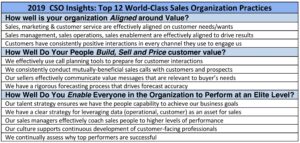
“Watch the meanings you give to events. They impact the perception of your actions.” -Greg Williams, The Master Negotiator & Body Language Expert (Click to Tweet)

“Negotiator – To Be More Amazing Turn The Tables On Negative Emotions “
If he’d been a cartoon character, steam might have been bursting from his ears. He muttered under his breath, “that S.O.B. will not get away with that.” The S.O.B. that he was referring to was the other negotiator, who had stoked the negative emotions of our steamer. And the steamer swore he’d turn the tables on his adversary.
Have you been in a situation where the opposing negotiator did something that sent your emotions into negative territory? We’ve all been there at one point in a negotiation. But what good did that serve? It only upset you.
If you’d like to discover how to confront emotions better and increase your negotiation outcomes, consider the following before and during your negotiation.
Causes of Distress
Most emotions stem from people seeking and not achieving either more sex, money or good health. If you just thought, I know that. My question is, as a negotiator, do you consider the impact that may have on a negotiation?
Depending upon whom you’re negotiating with, one aspect of those variables may be more important than another. Thus, if you’re not aware of what’s essential to your negotiation counterpart, you might experience negative emotions when you can’t acquire what you seek.
The lesson at this point is since there are three points from which negative emotions can stem, know which one is prominent in the mind of those with whom you negotiate. Having that insight going into a session will enhance the foresight of its outcome.
In Comparison
Is that the best you can do? Many negotiators have heard that question during a negotiation. Some hagglers become irate at it, especially when they think they’ve made their best offer. Smart negotiators divorce their emotions from the question. They know, no matter how good the offer may appear, if untested, they’d never know if there was a better one. Thus, they’ll test the proposition by asking if it’s the best one the other negotiator has.
So, when someone asks for a better deal, don’t become upset. Possessing uncontrolled emotions won’t serve you. Instead, ask what is meant by ‘a better deal.’ The opposing negotiator may have something in mind that you’d not considered. Thus, if you don’t ask the question about what he’s seeking or what he’s comparing your offer to, you could be negotiating against yourself. Therefore, don’t respond to his question before knowing his intent.
Focus
It’s a known fact that what you focus on commands your attention. Thus, to control negative emotions, you should monitor the views, thoughts, and opinions from others that you allow to come into your sphere. As an example, I use to believe I could control things that occurred in my environment. That meant I could control the news I watched, the pros and cons of those possessing opposing opinions, etc. But I came to realize that some of those thoughts crept into my subconscious mind without me realizing they’d done so. Thus, I began to act in ways that didn’t serve some of the goals I’d established. I came to realize that carrying the burden of some thoughts shaded my perspective and jaded my thought process during negotiations.
A peer associate who lives in Australia, Tanja Windegger, a Ph.D. candidate, suggested that I stop watching the news. She implied that it might be causing me unknowing stress. She further stated, “anxiety interferes with the optimal activity of our immune system.” Translation, when your immune system becomes compromised, so does your emotional state of mind and health.
The point is, be aware of what motivates your actions. And to what degree your activities align with the outcomes you seek. Even if you let your guard down for a moment, negative thoughts may sneak attack your mind. And they may do so without you being aware that an invasion has begun.
Mixed Messages
How well do you work with mixed messages? When there’s a conflict in messaging (e.g., do this – no, do that), or worse outright lies, it can create a lack of action due to not knowing what to do. The negativity can become amplified when you’re the subordinate and your superior commands you to engage in activities that cross your perspective of what’s right and wrong. That can be demoralizing and debilitating. And the latter can be the gateway that leads to unwanted adventures when you become overwhelmed by mixed messages that reside within your mind. To control your thoughts, control the meaning you assign to the events that occur to you, and be mindful of what comes into your thought process.
How You Steward
People may not know how you feel, but they gain insight into what you’re experiencing based on how you act. And of course, you know how you think, which shows in your actions. Thus, another reason you should watch the meanings you give to events. Because they impact the perception of your actions.
Reflection
Don’t view the truth as an adversary. Instead, embrace it. The only way to do that is to know what it means to you and the other negotiator. Not until then will you know what you’re dealing with, and from there, how to control your emotions. Everyone can lose their cool and become heated during a negotiation. But the more you’re aware of what triggers your feelings, and those of the other negotiator, the better you can control the negotiation. And everything will be right with the world.
Remember, you’re always negotiating!
Listen to Greg’s podcast at https://anchor.fm/themasternegotiator
After reading this article, what are you thinking? I’d like to know. Reach me at Greg@TheMasterNegotiator.com
To receive Greg’s free “Negotiation Tip of the Week” and the “Sunday Negotiation Insight” click here https://www.themasternegotiator.com/greg-williams/
#Emotions #csuitenetwork #thoughtcouncil #Bodylanguage #readingbodylanguage #Negotiation #Control #Conversations #NegotiationStrategies #NegotiationProcess #NegotiationSkillsTraining #NegotiationExamples #NegotiationTypes #ReadingBodyLanguage #BodyLanguage #Nonverbal #Negotiate #Business #SmallBusiness #Negotiation #Negotiator #NegotiatingWithABully #Power #Perception #emotionalcontrol #relationships #BodyLanguageExpert #HowToNegotiateBetter #CSuite #TheMasterNegotiator #ControlEmotions #GregWilliams #success #negotiation examples #Negotiation strategies #negotiation process #negotiation skills training #negotiation types #negotiation psychology #Howtowinmore #self-improvement #howtodealwithdifficultpeople #Self-development #Howtocontrolanegotiation #howtobesuccessful #HowToImproveyourself





















